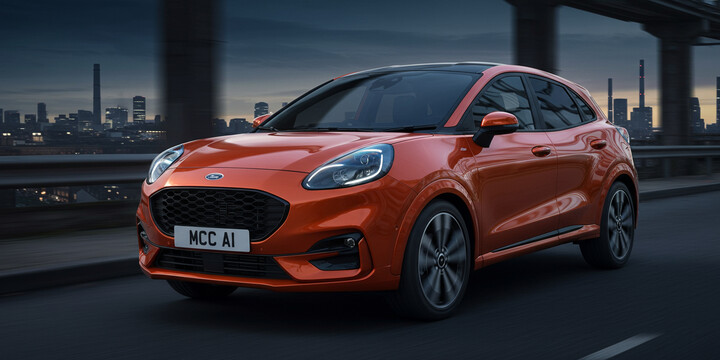
FORD PUMA (2019-24) 5DR SUV 1.0T ECOBOOST MHEV 155 GPF SS EU6 ST-LINE X VIGNALE 6SPD
The FORD PUMA (2019-24) 5DR SUV 1.0T ECOBOOST MHEV 155 GPF SS EU6 ST-LINE X VIGNALE 6SPD is a stylish and versatile small SUV that fits perfectly into the active, urban lifestyle. Designed for city driving and everyday adventures, this model combines compact size with ample interior comfort, making it an ideal choice for families, daily commuters, and first-time car buyers alike. Its standout features include a sleek design, upgraded Vignale trims, and efficient hybrid technology, which together offer a smooth driving experience with impressive fuel economy.
Known for its reliability and modern features, the Ford Puma stands out among rivals in the small SUV class by providing a comfortable ride, innovative safety features, and contemporary styling. With an average mileage of around 23,395 miles and a close to half-a-dozen previous owners, it's a well-used yet maintained vehicle suitable for those seeking a stylish, practical, and economical vehicle. Whether for city errands, weekend getaways, or daily commuting, the Ford Puma (2019-24) offers a compelling combination of design, performance, and value, making it a popular choice in the UK's competitive SUV market.

average use

The most recent mileage data for the Ford Puma (2019-24) SUV indicates that the majority of these vehicles, approximately 72.5%, have recorded mileages of less than 10,000 miles, suggesting many are relatively new or lightly used. A smaller proportion, around 10%, have recorded between 20,000 and 30,000 miles, while just 7.5% have between 40,000 and 50,000 miles. Notably, there is a relatively small percentage of vehicles with higher mileages, which could point to a generally low-mileage fleet within this model range. This distribution highlights that many Ford Pumas in the sample are likely to be recent purchases or have been driven sparingly.

vehicle values

The data provides private sale price adjustments for a Ford Puma (2019-24) 5-door SUV with a 1.0T EcoBoost MHEV engine. Notably, the largest discounts are observed in the £21,000 to £22,000 range, with a 20% reduction, indicating significant price pressure in this segment. Conversely, vehicles priced between £13,000 and £14,000 see a modest 2.5% discount, suggesting more stable valuations at the lower end. Overall, the data reflects a wide variation in price adjustments across different price brackets, with mid-range prices experiencing more moderate discounts and higher or lower extremes showing larger deviations.

production years

The data indicates that the majority of the Ford Puma vehicles in this sample were manufactured in 2020, accounting for 82.5%. There is a smaller proportion from 2022 at 12.5%, and a minimal presence from 2021 at just 5%. This suggests that most of these vehicles are relatively recent models from 2020, with fewer units from 2021 and 2022.

colour popularity

The data for the Ford Puma (2019-24) indicates that the most common main paint colour among these vehicles is grey, accounting for 55% of the sample. Black and blue are equally popular, each representing 10%, while red also makes up 10%. Silver and white are less common, with each comprising 7.5%. This suggests that buyers tend to favor neutral and darker tones for this model, with grey being the predominant choice.

ownership cycle

The data indicates that the majority of 'FORD PUMA (2019-24) 5DR SUV 1.0T ECOBOOST MHEV 155 GPF SS EU6 ST-LINE X VIGNALE 6SPD' vehicles have had only one registered keeper, accounting for 67.5%. About a quarter of these vehicles have had two registered keepers (25%), while a small portion, 7.5%, have had three registered keepers. This suggests that most vehicles of this model tend to be owned by a single individual or entity throughout their lifecycle, which could imply good ownership stability for this vehicle type.

engine choices

The data indicates that all sampled vehicles of the Ford Puma (2019-24) 5-door SUV with a 1.0T EcoBoost MHEV engine are equipped with a 999cc engine capacity, and 100% of these vehicles use petrol as their primary fuel type. This suggests a consistent engine size and fuel choice across the model range, reflecting standard specifications for this particular vehicle and engine configuration.












